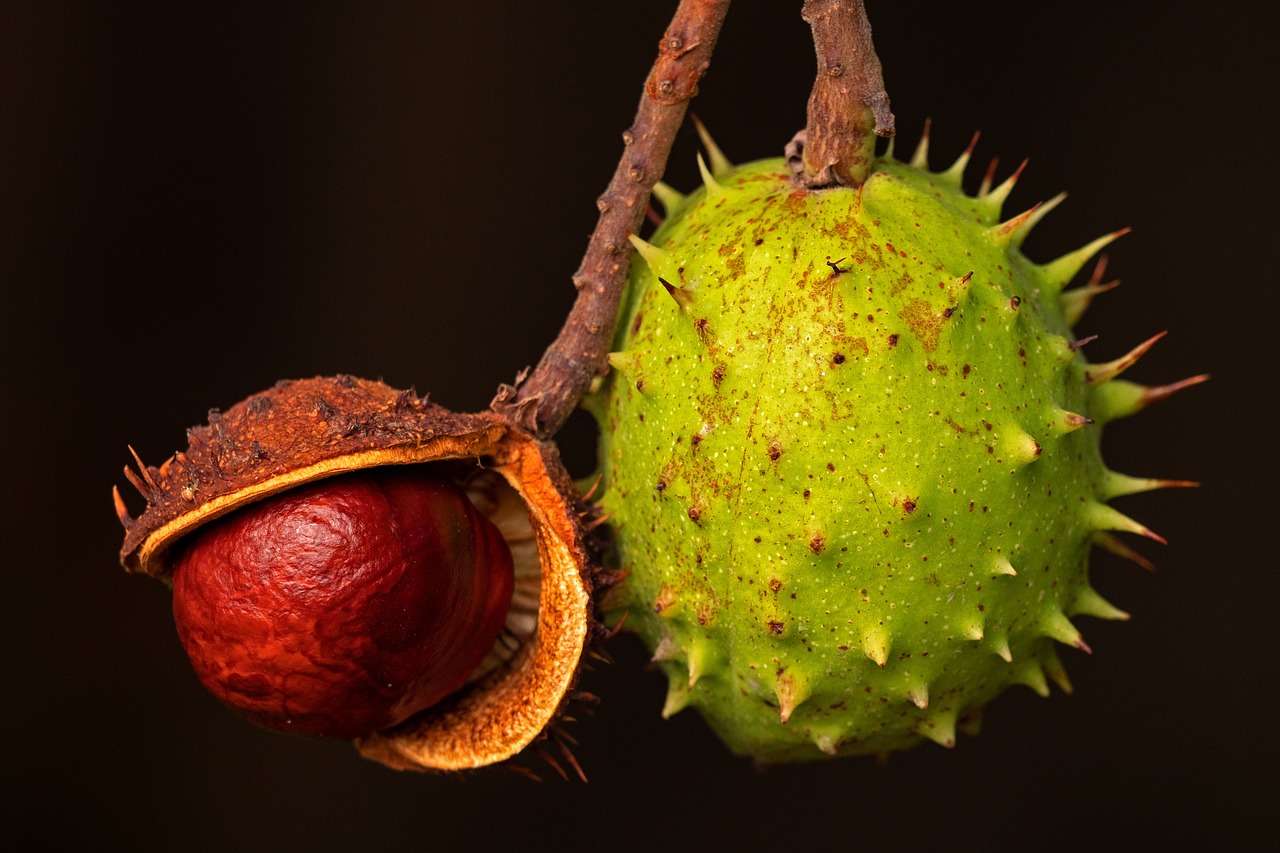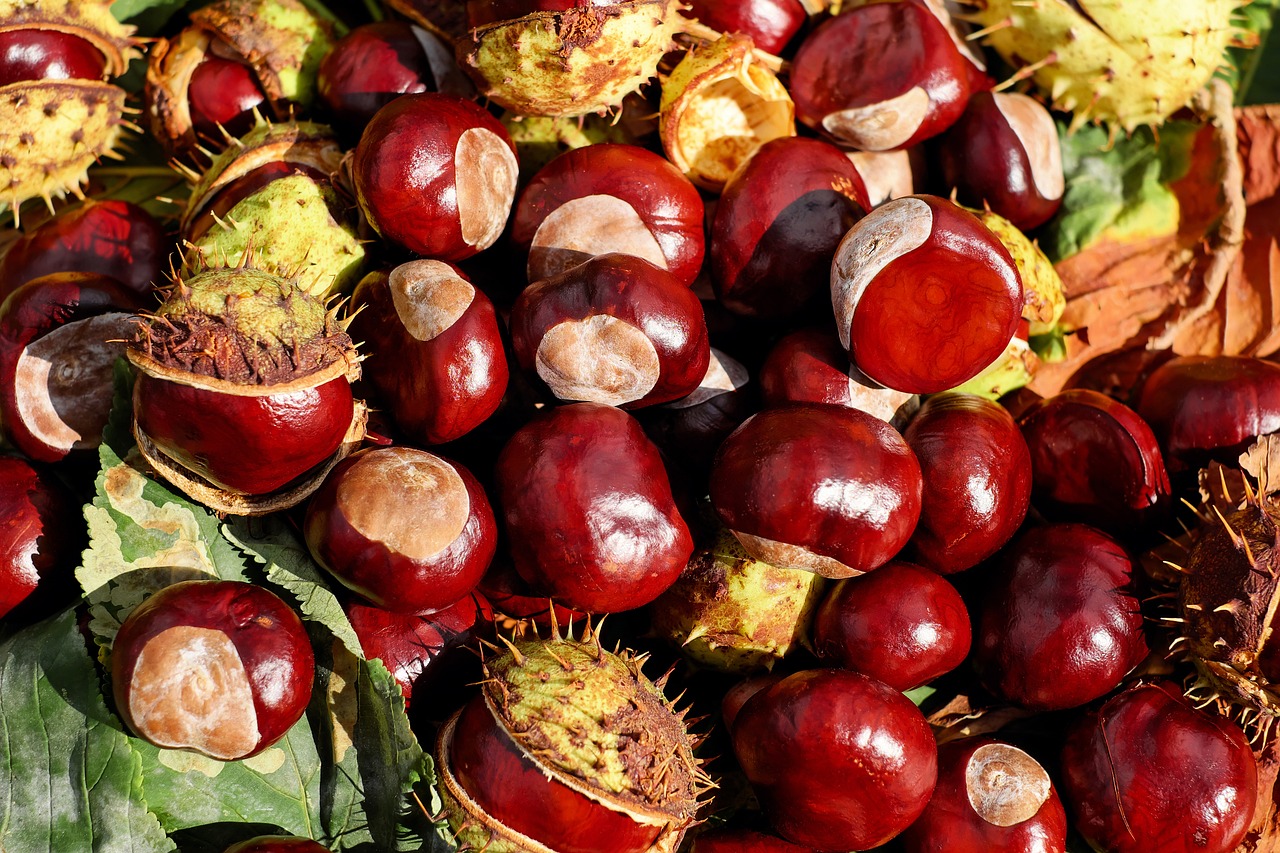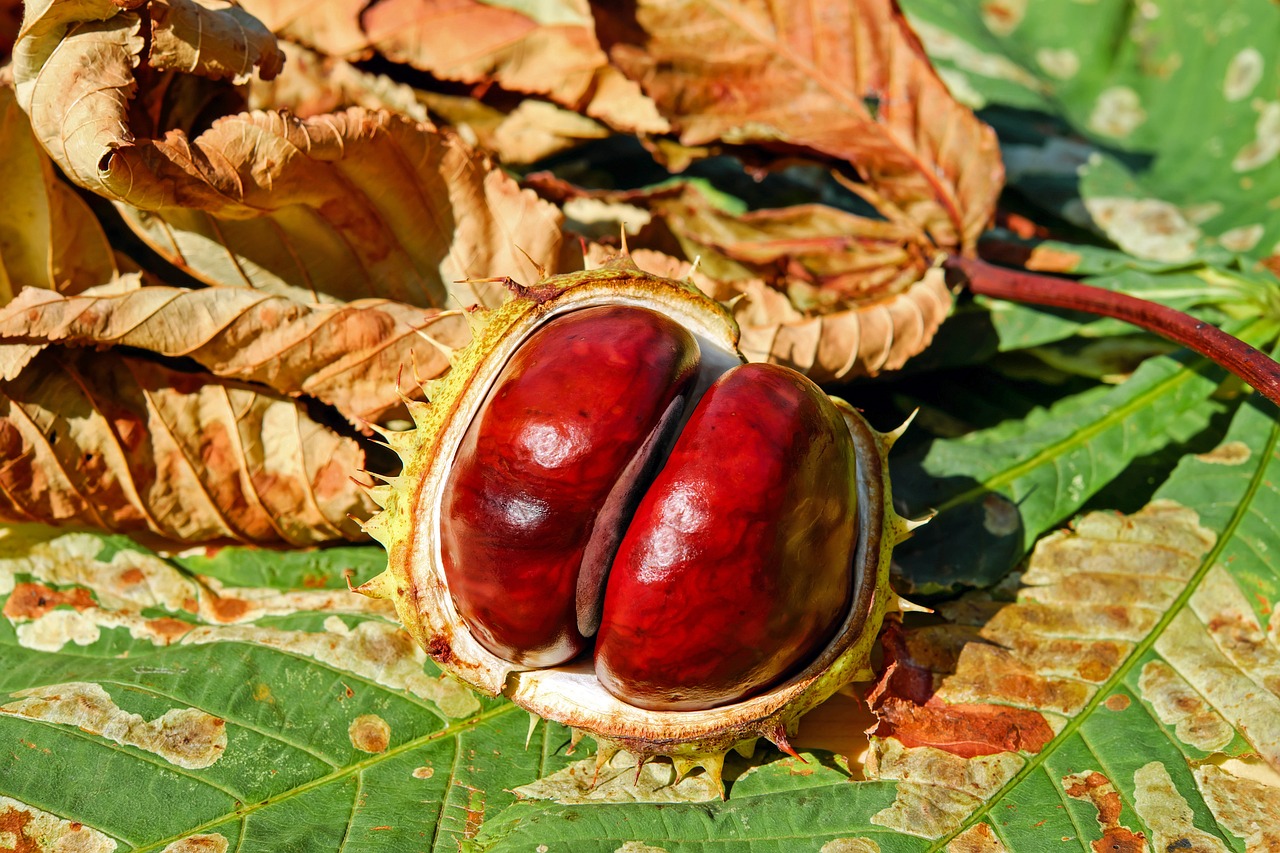The chestnut tree typically begins to bear fruit three to five years after planting. However, it can take up to ten years for the tree to reach its full production potential. Patience is essential, as environmental conditions and care practices significantly affect this timeframe.
Understanding the Chestnut Tree Lifecycle

The chestnut tree, belonging to the genus Castanea, is a deciduous tree known for its nutritious nuts and beautiful foliage. Growing chestnut trees can be a rewarding venture, but it requires a thorough understanding of their lifecycle. The journey from planting to fruiting involves several stages including germination, growth, and maturity.
Initially, after planting, chestnut seeds germinate within a few weeks. Young trees grow rapidly. Their growth rate depends on factors such as soil quality, sunlight, and water availability. While the initial years are crucial for establishing a strong root system, the anticipation for fruiting begins much later.
Typically, chestnut trees start producing nuts around the third year if they are grown from grafted stock. Seed-grown trees may take longer, often reaching maturity between the fifth and tenth year. Understanding these timeframes is essential for anyone considering planting chestnut trees.
Factors Influencing Fruiting Timeframe
Several factors can influence how quickly a chestnut tree will bear fruit. Some of these include:
- Variety: Different varieties of chestnut trees have varying maturation times.
- Soil Quality: Nutrient-rich and well-drained soil promotes faster growth.
- Climate: Chestnuts thrive in temperate climates with distinct seasons.
- Watering Practices: Adequate irrigation during dry spells is critical for young trees.
- Pest Management: Protecting trees from pests ensures healthy growth and fruiting.
The Importance of Patience
Patience is vital when cultivating chestnut trees. Many first-time growers underestimate the time required for trees to produce their first nuts. It is essential to remember that the chestnut tree’s growth is not only about speed but also about establishing a healthy and resilient plant capable of producing high-quality nuts.
During the initial years, focus on soil health, watering, and proper pruning techniques. These practices lay the groundwork for future fruit production. Additionally, young trees should be monitored for diseases or pests that could hinder their development.
Expectations for Fruit Production
When the trees finally begin to bear fruit, expectations should be managed. A mature chestnut tree can produce anywhere from 50 to 100 pounds of nuts per year under optimal conditions. However, initial yields may be much lower as the tree matures. It is common for young trees to produce only a small number of nuts in their early fruiting years.
| Tree Age (Years) | Average Yield (Pounds) |
|---|---|
| 3-5 | 5-20 |
| 6-10 | 20-50 |
| 10+ | 50-100+ |
With proper care and maintenance, the chestnut tree can continue to produce nuts for many years, contributing to both personal use and potential commercial opportunities. The journey of nurturing these trees requires commitment but promises rewarding results in the long run.
Optimal Growing Conditions for Chestnut Trees
To maximize the potential of chestnut trees, it is essential to understand their optimal growing conditions. These trees thrive in specific environments that contribute to their growth and fruiting capabilities. Several factors play a crucial role in creating the ideal conditions for chestnut tree cultivation.
Soil Requirements
Chestnut trees prefer well-drained, loamy soil that is rich in organic matter. The soil pH should ideally be between 5.5 and 6.5, as they are sensitive to alkaline conditions. Here are some key soil considerations:
- Drainage: Poorly drained soil can lead to root rot, which is detrimental to the tree’s health.
- Nutrient Content: Regular soil testing can help determine the nutrient levels and guide fertilization efforts.
- Organic Matter: Incorporating compost or well-rotted manure can improve soil structure and fertility.
Climate Considerations
The climate is another significant factor influencing the growth of chestnut trees. They thrive in temperate regions with distinct seasons. Here are some climate-related aspects to consider:
- Temperature: Chestnut trees prefer moderate temperatures, ideally ranging from 75°F to 85°F during the growing season.
- Frost Sensitivity: Young trees are particularly susceptible to frost damage. Late spring frosts can harm blossoms, affecting fruit set.
- Humidity: Adequate humidity levels enhance the tree’s growth, but excessive humidity can promote fungal diseases.
Planting and Maintenance Practices
Proper planting and maintenance practices are vital for establishing healthy chestnut trees that can bear fruit effectively. Understanding the best practices can aid both novice and experienced growers.
Site Selection
Selecting the right site for planting chestnut trees is crucial. Ideal locations should have:
- Sunlight: Chestnut trees require full sun for at least six hours daily to thrive.
- Air Circulation: Good air movement helps prevent fungal diseases and supports healthy growth.
- Space: Trees should be spaced adequately to allow for their mature size, typically 30-40 feet apart.
Watering Techniques
Watering is a critical aspect of chestnut tree care, especially during the early years of growth. Here are some effective watering techniques:
- Deep Watering: Water deeply but infrequently to encourage deep root development.
- Mulching: Applying a layer of mulch helps retain moisture and regulate soil temperature.
- Irrigation Systems: Consider drip irrigation systems for efficient watering during dry periods.
Pest and Disease Management

Pest and disease management is essential for maintaining healthy chestnut trees. Various pests can affect their growth, while diseases can compromise nut production. Here are some common pests and strategies for managing them:
- Cankers: Monitor for signs of cankers on the trunk and branches, which may require pruning or fungicide treatments.
- Pests: The chestnut weevil and other insects can damage nuts; regular inspections and insecticides may be necessary.
- Fungal Diseases: Fungal issues such as blight can be mitigated through proper spacing, pruning, and fungicide applications.
By implementing these practices, growers can establish thriving chestnut trees that will eventually bear fruit, enhancing both their landscape and yield potential. The combination of optimal growing conditions, planting techniques, and vigilant pest management creates a foundation for success in chestnut cultivation.

Harvesting Chestnuts
Once chestnut trees reach maturity and begin to produce nuts, the next essential phase is harvesting. Knowing when and how to harvest chestnuts is crucial for maximizing yield and ensuring quality. The timing and method of harvest can significantly impact the flavor and readiness of the nuts.
When to Harvest
Chestnuts are typically ready for harvest in late summer to early autumn, depending on the specific variety and local climate conditions. Observing the following signs can help determine the right time for harvesting:
- Hull Splitting: The outer husk of the chestnut, known as the burr, will begin to split open as the nuts mature. This is a key indicator that harvesting is imminent.
- Color Change: The nuts will change color from green to a brownish hue as they mature.
- Drop Rate: Mature chestnuts will start to drop from the tree. Collecting them from the ground can often be an indicator of readiness.
Harvesting Techniques
Proper harvesting techniques are fundamental to ensuring that chestnuts are collected efficiently and without damage. Here are some effective methods:
- Manual Harvesting: For smaller orchards, hand-picking is often the best method. Wearing gloves is advisable due to the spiny burrs.
- Rakes and Baskets: Using rakes can help gather nuts from the ground while collecting them in baskets can streamline the process.
- Mechanical Harvesters: In larger orchards, mechanical harvesters may be used to speed up the process, allowing for efficient collection.
Post-Harvest Handling
After harvesting, proper handling and storage of chestnuts are essential to maintain their quality and extend their shelf life. Here are some important practices:
Cleaning and Sorting
Once harvested, chestnuts should be cleaned and sorted. The following steps can enhance their quality:
- Cleaning: Remove any debris, dirt, or leaves from the harvested nuts. A gentle rinse with water can also help.
- Sorting: Sort out any damaged or rotten nuts. Healthy nuts will feel firm and heavy in hand.
Storage Conditions
The storage conditions play a significant role in preserving chestnuts after harvest. Here are some guidelines:
- Humidity: Chestnuts should be stored in a cool, humid environment. A humidity level of around 60-70% is ideal.
- Temperature: Store chestnuts at temperatures between 32°F to 40°F (0°C to 4°C). Refrigeration can be beneficial for extending freshness.
- Avoiding Mold: Ensure good air circulation around stored chestnuts to prevent mold growth. Periodically checking for signs of spoilage is advisable.
Culinary Uses of Chestnuts

Chestnuts are not only valuable for their nutritional content but also appreciated for their culinary versatility. Understanding various uses allows growers and consumers to make the most of their harvest.
Cooking Methods
Chestnuts can be enjoyed in numerous ways. Here are some popular cooking methods:
- Roasting: Roasting chestnuts enhances their natural sweetness and results in a soft, creamy texture.
- Baking: Incorporating chestnuts into baked goods such as breads and pastries adds unique flavor and texture.
- Pureeing: Cooked chestnuts can be pureed to create soups or sauces that are rich and hearty.
Nutritional Benefits
In addition to their culinary appeal, chestnuts offer various nutritional benefits:
- Low in Fat: Unlike most nuts, chestnuts are low in fat, making them a heart-healthy option.
- Rich in Fiber: They provide a good source of dietary fiber, promoting digestive health.
- Vitamins and Minerals: Chestnuts contain essential vitamins such as vitamin C and B vitamins, along with important minerals like potassium and magnesium.
The diverse uses of chestnuts, combined with their nutritional advantages, make them an appealing choice for both culinary enthusiasts and health-conscious individuals alike. With proper care throughout the growing process and thoughtful harvesting techniques, growers can enjoy a fruitful harvest year after year.
Seasonal Care and Maintenance
As chestnut trees progress through their lifecycle, understanding seasonal care and maintenance is crucial for promoting healthy growth and maximizing yields. Each season presents unique challenges and opportunities for growers.
Spring Care
Spring is a critical time for chestnut trees as they awaken from dormancy. Here are some key activities to focus on during this season:
- Fertilization: Apply a balanced fertilizer to encourage vigorous growth as the tree begins to leaf out.
- Pruning: Late winter or early spring is an ideal time to prune any dead or diseased branches, promoting better air circulation.
- Pest Monitoring: Begin monitoring for pests such as the chestnut weevil and take preventive measures as needed.
Summer Care
During the summer months, maintaining adequate moisture and managing pests is vital:
- Irrigation: Ensure that trees receive sufficient water, especially during dry spells. Deep watering encourages strong root systems.
- Pest Management: Continue to monitor for pests and diseases. Implement measures such as traps or organic insecticides if necessary.
- Mulching: Apply mulch around the base of the trees to conserve moisture and suppress weeds.
Autumn Activities
As autumn approaches, the focus shifts toward preparing for harvest and winter:
- Harvesting: Collect chestnuts at their peak maturity to ensure quality and flavor.
- Soil Preparation: Consider applying organic matter or cover crops to improve soil health over the winter months.
- Tree Protection: Protect young trees from frost damage by wrapping trunks or using mulch to insulate roots.
Winter Care
Winter presents a quieter time for chestnut trees, but careful attention is still necessary:
- Monitoring: Inspect trees for any damage caused by snow or ice accumulation.
- Pruning: Late winter is suitable for pruning dormant trees, shaping them for optimal growth in the coming season.
Final Thoughts
The journey of growing chestnut trees encompasses various stages, from planting to harvesting. With patience and understanding of their growth requirements, growers can enjoy the rewards of their efforts. The timeframe from planting to fruiting may be lengthy, but the satisfaction of seeing healthy trees produce abundant nuts is unparalleled.
The importance of optimal growing conditions, diligent maintenance practices, and effective pest management cannot be overstated. Each aspect contributes to the overall health of the trees and their ability to bear fruit. As you embark on your chestnut cultivation journey, keep in mind the unique characteristics of your specific environment, as local conditions can significantly influence growth patterns.
Culinary enthusiasts can appreciate the versatility of chestnuts in various dishes, while health-conscious individuals will benefit from their nutritional properties. Whether enjoyed roasted, pureed into soups, or incorporated into baked goods, chestnuts provide a delightful taste experience.
In conclusion, cultivating chestnut trees requires dedication and care, but the results are well worth the investment. By following best practices and embracing a patient approach, growers can ensure a successful and fruitful chestnut harvest for many years to come.
